非金融类上市公司金融资产投资活动的市场反应研究
VIP免费
浙江财经学院硕士学位论文
I
摘 要
百年一遇的金融危机揭示了金融资产的高风险性,也提醒世人警惕金融风险
管理。但是在近几年,上市公司越来越热衷金融资产投资活动,例如购买银行理
财产品、各类期货和债券、持股其他上市公司等。本文的研究重心在于外部市场
对非金融类上市公司金融资产投资活动的反应,分析产生这种市场反应的原因,
并向监管部门和公司管理层提出相关的建议。
文章首先梳理了有关公司投资行为和金融资产价值计量的相关研究文献。在
投资行为方面,现有的研究都把目光聚焦在投资行为的影响因素、投资行为的合
理性和投资行为的动机,并且都是从公司本身的角度出发进行研究,鲜有专门针
对投资行为的市场反应的研究。对于金融资产价值计量,现有的相关研究侧重讨
论金融资产的会计分类和计量属性的选择,但是在公司金融资产投资活动方面缺
乏深入的分析。另外,文章还回顾了与上市公司信息披露的相关文献。本文选择
委托代理理论、由管理层过度自信和羊群效应组成的行为财务理论以及信号理论
来支持上市公司投资动机的研究。
实证研究和案例分析是文章的重点内容。实证研究中,本文选取了 2008 年至
2010 年88 家非金融类上市公司为样本,以金融资产占总资产的比例为涉及金融资
产投资行为的解释变量、表示市场对公司资产估价的市净率为代表市场反应的被
解释变量,并加入适当的控制变量,进行平衡面板数据线性回归。结果显示,市
净率与金融资产投资规模呈负相关关系,即外部市场对非金融类上市公司的金融
资产投资行为不赞成。雅戈尔公司的案例分析中,超额收益率和市净率指标的分
析结果都与实证研究的结果一致。本文用雅戈尔公司 2007 年至 2011 年的数据从
金融资产价值的波动性、金融资产价值计量对公司经营业绩的影响和金融资产投
资的信息披露三方面解释外部市场对非金融类上市公司金融资产投资行为的反
应。
通过实证研究和案例分析,本文针对非金融类上市公司金融资产投资行为分
别向会计监部门和公司管理层提出相关建议。会计监管部门应当对从上市公司的
金融投资专业能力、金融投资信息披露和信息披露的考评体系三个方面来着手完
善上市公司金融投资活动。公司的管理层则应当重视投资项目选择和风险管理体
系,以保证公司投资活动的合理性和有效性。
关键词:非金融类上市公司;金融资产;公允价值;波动性;信息披露
浙江财经学院硕士学位论文
II
ABSTRACT
The unexpected and thrilling financial crisis in recent years infers the high risk of
financial asset and the indispensable attention to risk management as well. But it is
dramatically confusing that recently listed companies in China increasingly indulge
themselves in financial investment including the finance-management programs sold by
banks, a variety of futures and bonds and security investing. However, the risk in
financial asset makes financial asset unsuitable to be a vital part of listed companies’
asset. Therefore, this paper focuses on the attitude of the outside market toward
non-financial listed companies’ financial investment.
Firstly the paper collects the researches on corporate investing behavior and
financial asset measurements. The existing researches concentrate on the factors,
rationality and motives of companies’ investing behavior mainly pointing to real
economy, the arguments of fair value and amortized cost and the effect information
disclosure has on companies’ performance. There hardly has been a pertinent study on
the attitude of the outside market toward non-financial listed companies’ financial
investment about which this paper cares. Principal-agent theory, behavioral finance
merely consisting of management’s overconfidence and herding behavior, and signaling
theory are treated as the theoretical preparations which support companies’ investing
motives.
The empirical research and the case study are the keys to this paper. Based on a
balance sample of 88 listed companies’ data ranged from 2008 to 2010 and combined
with several appropriate controlled variables, the empirical model analyzes the
relationship between the dependent variable “the natural logarithm of price/book value”
which stands for the attitude of outside market and the independent variable “the
financial investment size” defined by the ratio of financial investment amount and total
asset. The regression’s result proclaims the negative relationship between the price/book
value and financial investment size which means the larger the company’s financial
investment size, the lower the outside market’s evaluation of the company. In the case
study of Youngor which is criticized for its exceeding enthusiasm to financial
investment, the analysis of its cumulative abnormal return (CAR) and price/book value
sides with the empirical research. Given Youngor’s data ranged from 2007 to 2011, the
financial volatility stemming from financial asset, this volatility’s effect on Youngor’s
浙江财经学院硕士学位论文
III
performance and the imperfection of financial investment’s information disclosure are
considered to be the factors which lead to the outside market’s negative attitude toward
financial investment.
Finally, the paper proposes several suggestions to regulate non-financial listed
companies’ financial investment: the supervisor should make sure whether or not the
non-financial listed companies are professionally qualified to invest financial asset and
then accordingly control the financial investment’s size respectively with a further
disclosure; the management should attach importance to the process of investing
decision and risk management.
Key words: non-financial listed companies; financial asset; fair value; volatility;
information disclosure.
浙江财经学院硕士学位论文
IV
目 录
第一章 引言.........................................................1
第一节 研究背景——金融危机带来的启示...........................1
第二节 提出问题——上市公司金融投资潮...........................2
第三节 研究方法和文章结构.......................................3
第四节 创新之处.................................................4
第二章 文献综述.....................................................5
第一节 公司投资行为的相关文献...................................5
第二节 金融资产的相关文献.......................................9
第三节 上市公司信息披露的相关文献..............................11
第三章 理论基础....................................................14
第一节 委托——代理理论........................................14
第二节 行为财务理论............................................15
第三节 信号理论................................................17
第四节 理论总结................................................17
第四章 实证研究....................................................19
第一节 实证假设与样本选取......................................19
第二节 实证模型设计............................................20
第三节 描述性统计与相关性分析.................................
.23
第四节 线性回归................................................25
第五节 实证结果分析............................................27
第五章 案例分析....................................................28
第一节 研究对象选择及公司简介..................................28
第二节 雅戈尔公司金融资产投资规模分析........
..................28
第三节 外部市场对雅戈尔公司金融投资活动的反应..................29
第四节 市场反应背后的原因分析..................................31
第五节 案例分析总结............................................38
第六章 研究结论和相关政策建议......................................39
第一节 研究结论................................................39
第二节 相关政策建议............................................39
浙江财经学院硕士学位论文
V
第七章 研究局限性和展望............................................42
第一节 研究局限性..............................................42
第二节 研究展望................................................42
参考文献...........................................................44
附 录...........................................................50
附录 1.........................................................50
附录 2.........................................................51
致 谢...........................................................52
浙江财经学院硕士学位论文
1
第一章 引言
第一节 研究背景——金融危机带来的启示
从2008 年9月15 日雷曼兄弟宣布破产开始,由美国次贷危机所引发的金融
危机通过日益活跃的金融市场席卷全球,并且蔓延至各个经济领域。起初,舆论
的矛头指向金融资产的公允价值会计计量属性。普遍的观点认为,公允价值计量
属性所带有的顺周期效应夸大了金融危机。在多方的建议和推动下,美国会计准
则委员会(FASB)和国际会计准则理事会(IASB)立即合作讨论和修改金融工具
相关的会计准则,旨在应对金融危机带来的创伤,尽快恢复金融市场的稳定。其
他机构,如金融稳定理事会(FSB)和金融危机咨询组(FCAG),也积极推进金
融工具会计改革。但事实是,金融投资决策失误和风险管理疏漏才是此次金融危
机的始作俑者。金融资产的不稳定性使得金融资产投资决策和风险管理存在较大
的难度,金融危机的后果警示了金融资产决策失误和风险管理疏漏的这种负面影
响。在经过金融危机洗礼的今天,欧洲债务危机四伏,多国政治局面动荡,加上
经济市场高度全球化,金融市场稳定已经成为世界性话题,金融投资和风险管理
问题更是首当其冲。
从上世纪末起,金融市场迅猛发展,各种金融创新不断涌现,金融投资所具
有的高收益吸引了投资者的目光,但其中所伴随着的高风险却常常被投资者忽略,
这次的金融危机就是最好的例证。金融资产的价值完全由市场决定,因此其价值
的波动跟随市场的起伏。市场的起伏无法被人为地准确预计,造就了金融资产的
不稳定性,即包括流动性和风险性。
金融资产的流动性和风险性是相辅相成的。金融资产对市场具有资源再分配
的作用。流动性是保证金融辅助资源有效分配的必要条件之一,也是解决资源错
配的前提之一,但是在流动的过程中,金融资产的风险也不断增加和扩大。金融
资产的流动性与其价值成正比,即金融资产的流动性越大,金融资产的市场价值
越高。固定的金融资产难以在市场上得到公正的估价,只有能够跨时间、跨地域
交易的金融资产才会有合理的市场价值。
在金融危机初现西方的时候,中国资本市场正处于异常火热的状态,相比于
其他国家的骤然衰退,当时的中国经济发展让世界眼红。但是几年后的今天,这
场金融危机对中国经济的影响开始慢慢显现,实体经济市场疲软不堪,出口贸易
节节衰退,虚拟资本市场牛熊转变。然而与整体经济发展势头背道而驰的是上市
摘要:
展开>>
收起<<
浙江财经学院硕士学位论文I摘要百年一遇的金融危机揭示了金融资产的高风险性,也提醒世人警惕金融风险管理。但是在近几年,上市公司越来越热衷金融资产投资活动,例如购买银行理财产品、各类期货和债券、持股其他上市公司等。本文的研究重心在于外部市场对非金融类上市公司金融资产投资活动的反应,分析产生这种市场反应的原因,并向监管部门和公司管理层提出相关的建议。文章首先梳理了有关公司投资行为和金融资产价值计量的相关研究文献。在投资行为方面,现有的研究都把目光聚焦在投资行为的影响因素、投资行为的合理性和投资行为的动机,并且都是从公司本身的角度出发进行研究,鲜有专门针对投资行为的市场反应的研究。对于金融资产价值计量...
相关推荐
-
建筑工程投标文件范本-(格式)VIP免费

 2024-11-22 17
2024-11-22 17 -
幕墙工程施工组织设计方案VIP免费
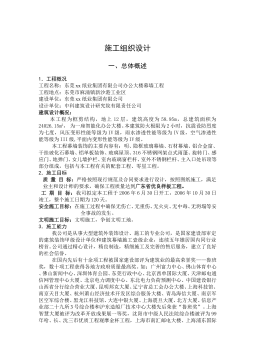
 2025-01-09 6
2025-01-09 6 -
建筑商品砼生产项目创业计划书VIP免费
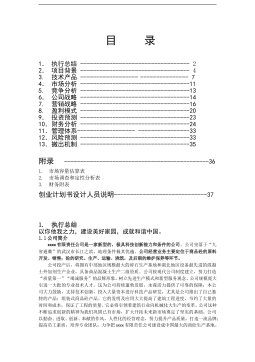
 2025-01-09 10
2025-01-09 10 -
建筑工程商业计划书模板VIP免费
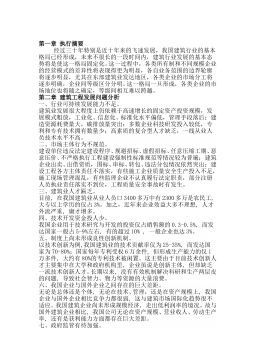
 2025-01-09 8
2025-01-09 8 -
工程项目施工计划书VIP免费
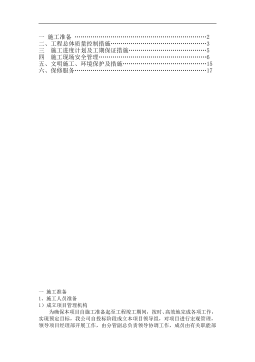
 2025-01-09 6
2025-01-09 6 -
《专业型文档》建筑企业计划书VIP免费
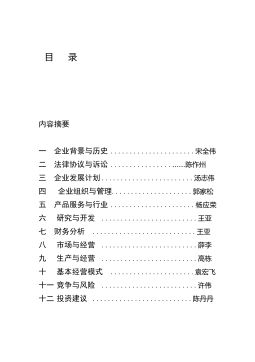
 2025-01-09 8
2025-01-09 8 -
xx水库灌区管道工程水工图纸C1VIP免费

 2025-01-09 13
2025-01-09 13 -
邮政区域仓储配送中心VIP免费
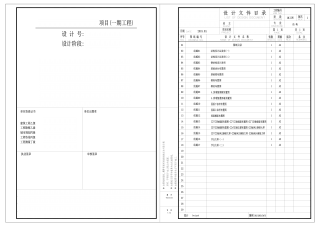
 2025-01-09 8
2025-01-09 8 -
疾病预防控制中心招标文件VIP免费
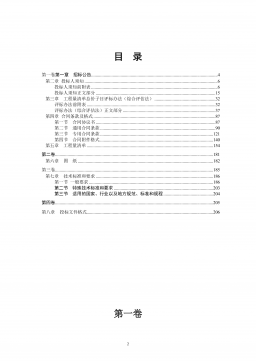
 2025-01-09 13
2025-01-09 13 -
体育健身中心施工招标文件VIP免费
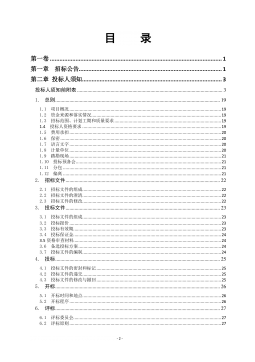
 2025-01-09 10
2025-01-09 10
作者:周伟光
分类:高等教育资料
价格:15积分
属性:54 页
大小:843.39KB
格式:PDF
时间:2024-09-30






